- Joined
- Oct 9, 2007
- Messages
- 47,611 (7.45/day)
- Location
- Dublin, Ireland
| System Name | RBMK-1000 |
|---|---|
| Processor | AMD Ryzen 7 5700G |
| Motherboard | Gigabyte B550 AORUS Elite V2 |
| Cooling | DeepCool Gammax L240 V2 |
| Memory | 2x 16GB DDR4-3200 |
| Video Card(s) | Galax RTX 4070 Ti EX |
| Storage | Samsung 990 1TB |
| Display(s) | BenQ 1440p 60 Hz 27-inch |
| Case | Corsair Carbide 100R |
| Audio Device(s) | ASUS SupremeFX S1220A |
| Power Supply | Cooler Master MWE Gold 650W |
| Mouse | ASUS ROG Strix Impact |
| Keyboard | Gamdias Hermes E2 |
| Software | Windows 11 Pro |
ZOTAC launched its premium GeForce GTX 770 Extreme Edition SKU in the Greater China region. The SKU outranks AMP!, and offers a suite of enthusiast features, such as a strong VRM, and better air cooling. It's not unlike the GTX 680 Extreme Edition or GTX 670 Extreme Edition. To begin with, the GTX 770 Extreme Edition features a slightly updated Gamer Force cooler, with higher aluminum fin density for the GPU heatsink, and a chunkier metal heatsink to cool the VRM. A back-plate cools components on the reverse side of the PCB.
The GTX 770 Extreme Edition features the same exact PCB as its predecessor, featuring a 12-phase (8+3+1) VRM, which makes use of noise-free chokes, a combination of conductive polymer and tantalum capacitors, three proadlizers (multi-phase capacitors for power conditioning), and International Rectifier PowIRstage driver-MOSFETs. A combination of CHiL CHL8318 (8-phase) and CHL 8214-03 (4-phase) chips are used to run the VRM. The main heatsink uses a copper base (not vapor-chamber) to make contact with the GPU, from which five 8 mm-thick nickel-plated copper heat pipes sprout out, transporting heat to the far-reaches of the heatsink. A pair of 92 mm PWM-controlled fans ventilate the heatsink, which are held by a sporty aluminum shroud.
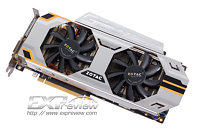
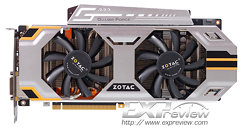
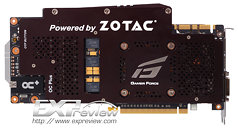
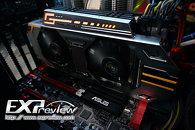
The GTX 770 Extreme Edition ships with clock speeds of 1150 MHz core, 1202 MHz GPU Boost, and 7.20 GHz memory. These clocks can be handled by the air cooling solution. An obscure DIP-switch lets you enable an LN2-friendly OTP mode, which bypasses a few electrical protections, making sure NVIDIA's limits don't come in the way of you and overclocking glory. Lastly, there's the OC+ module support, which is an internal USB connection to a device with buttons that let you control clocks, fan-speeds, voltages, among other things. Right next to the OC+ port are voltage measurement points. Find a review at the source.
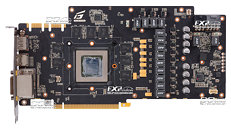
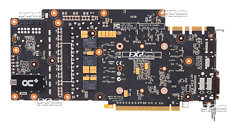
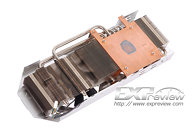
View at TechPowerUp Main Site
The GTX 770 Extreme Edition features the same exact PCB as its predecessor, featuring a 12-phase (8+3+1) VRM, which makes use of noise-free chokes, a combination of conductive polymer and tantalum capacitors, three proadlizers (multi-phase capacitors for power conditioning), and International Rectifier PowIRstage driver-MOSFETs. A combination of CHiL CHL8318 (8-phase) and CHL 8214-03 (4-phase) chips are used to run the VRM. The main heatsink uses a copper base (not vapor-chamber) to make contact with the GPU, from which five 8 mm-thick nickel-plated copper heat pipes sprout out, transporting heat to the far-reaches of the heatsink. A pair of 92 mm PWM-controlled fans ventilate the heatsink, which are held by a sporty aluminum shroud.




The GTX 770 Extreme Edition ships with clock speeds of 1150 MHz core, 1202 MHz GPU Boost, and 7.20 GHz memory. These clocks can be handled by the air cooling solution. An obscure DIP-switch lets you enable an LN2-friendly OTP mode, which bypasses a few electrical protections, making sure NVIDIA's limits don't come in the way of you and overclocking glory. Lastly, there's the OC+ module support, which is an internal USB connection to a device with buttons that let you control clocks, fan-speeds, voltages, among other things. Right next to the OC+ port are voltage measurement points. Find a review at the source.



View at TechPowerUp Main Site



